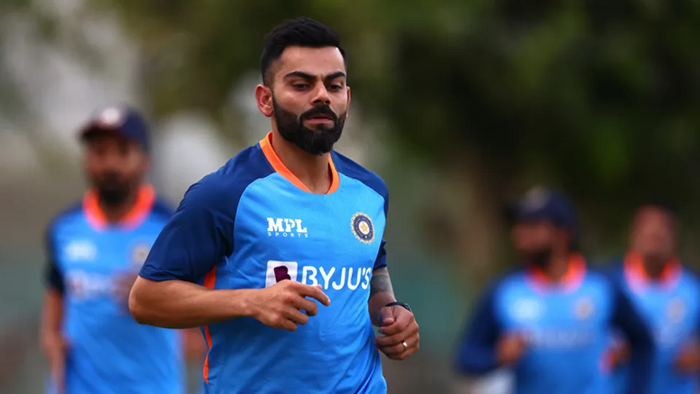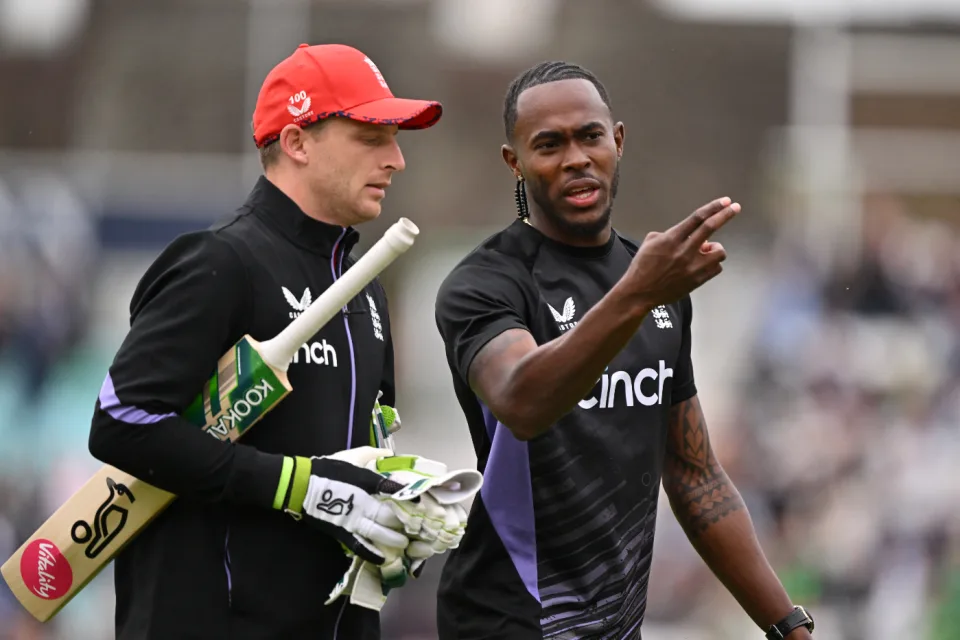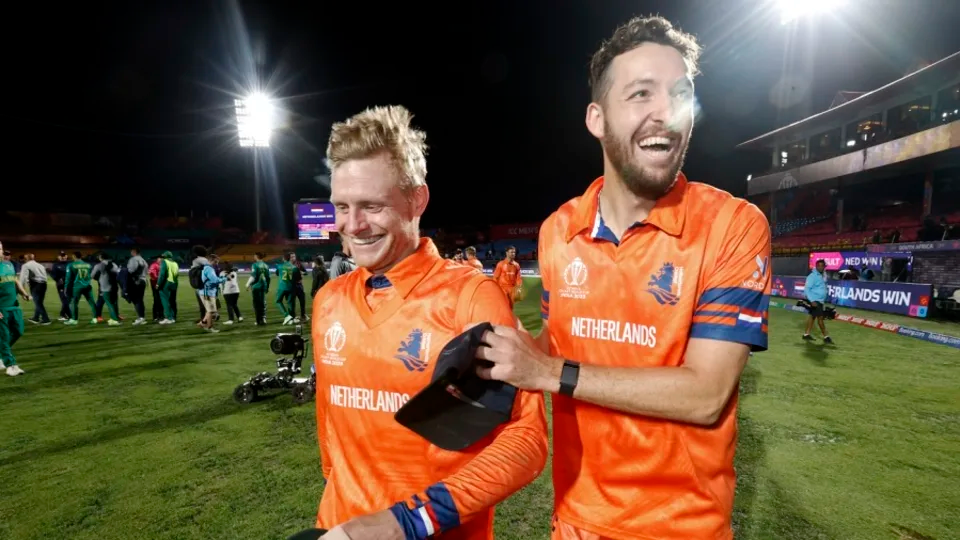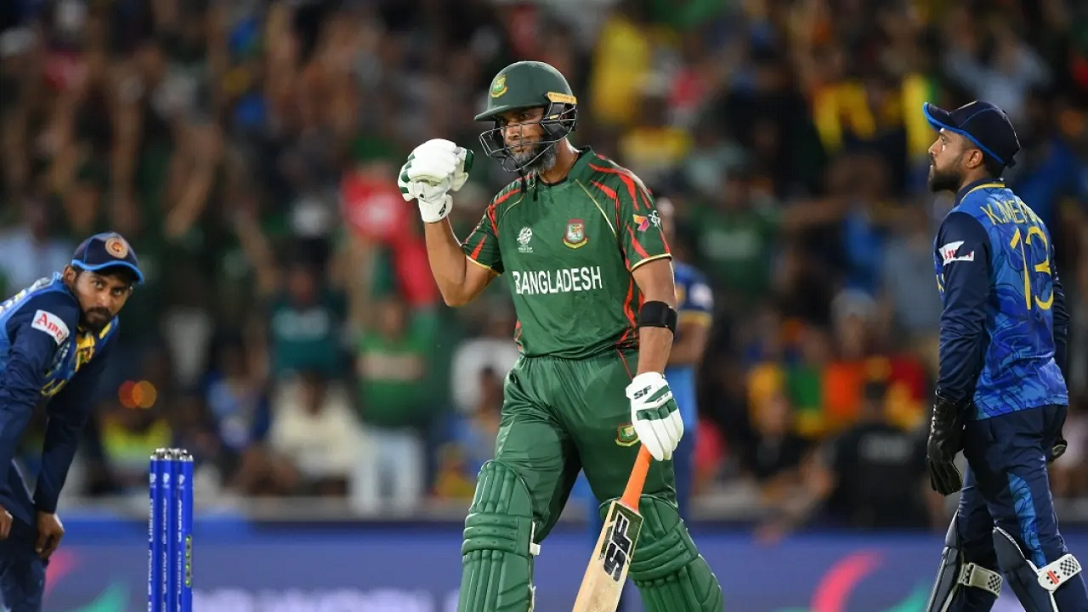Sports
Virat Kohli: ‘I came to realise I was trying to fake my intensity a bit recently’

Virat Kohli has opened up about his recent struggle to cope with expectations, workload and mental fatigue, saying he came to the realisation that he had been “trying to fake intensity a bit” in his determination to keep playing. India’s first Asia Cup match against Pakistan on August 28 will mark Kohli’s return to international cricket after a 42-day break following the conclusion of the tour of England in July.
“This is the first time in ten years that I have not touched the bat in a whole month,” Kohli told Star Sports during an interview with Jatin Sapru. “When I sat down and thought about it, I was like I haven’t actually touched a bat for 30 days, which I haven’t done ever in my life. That’s when I came to the realisation that I was kind of trying to fake my intensity a bit recently. ‘No, I can do it’… being competitive and convincing yourself that you have intensity but your body is telling you to stop. Mind is telling you to just take a break and step back… You can neglect it by saying you are fit, you are working hard on yourself, and you will be fine because you are fit mentally.
“I have been looked at as a guy who is mentally very strong, and I am, but everyone has a limit, and you need to recognise that limit, otherwise things can get unhealthy for you. So this period actually taught me a lot of things that I was not allowing to come to the surface. When they did, I embraced it. Yaar, there is much more to life than just your profession. And when the environment around you is such that everyone looks at you through your professional identity, somewhere you start losing perspective as a human being.”
On Sunday, Kohli will play his 100th T20 international, and become only the second cricketer after New Zealand’s Ross Taylor to play 100 matches in every format of the game – an indicator of the workload he has shouldered since his debut in 2008. And since 2020, no other Indian cricketer has played more internationals than Kohli’s 62 matches.
Kohli said that the demands of his schedule had affected his love for training, something that “disturbed” him and made him realise he needed “to step away” for some time. “I have always been a guy who followed his heart from day one… I never wanted to be or tried to be someone else, which in this recent phase I have been. I have tried to keep up to the demands and the expectations, not really felt my inner being completely, which this phase [away from the game] allowed me to do. I was experiencing that I was not excited to train, I was not excited to practice, and that really disturbed me because this is not who I am, and I literally needed to step away from that environment.”
Kohli said taking this break helped him rediscover his excitement for training and cricket once again. “When you are involved in such an environment, you are unable to see anything. When you remove yourself from there, then you realise what was happening… This has been an amazing break. I have never had this long a break, and the first thing I realised was that I was getting up in the morning excited to go to gym. It was not a thing like, ‘Oh I have to keep up with this.’ So that was my first mark.
“You can tend to get carried away with so many demands nowadays… You have seen the results of what happened to Ben Stokes and Trent Boult… Moeen [Ali] retiring from Test cricket. These aren’t abnormalities; it’s a very normal practice for people who are in touch with themselves and know what they want in life.”
As Kohli prepares to make his comeback, his form will once again come under scrutiny. He hasn’t scored an international century since November 2019, and his T20 form hasn’t been great either. Kohli has played only four T20 internationals since the World Cup last year, and he scored only 341 runs from 16 innings for RCB in IPL 2022 at a strike rate of 116. While elaborating on his mindset, Kohli said he had been trying to push himself “into a zone of competitiveness” because it “was not happening naturally” and that he was feeling better after the break.
“I’m feeling light now for sure, and it wasn’t just about the workload of cricket,” Kohli said. “There were many other factors on the outside as well, which contributed to me going into that space.
“You get to learn a lot of things. Things you are looking at from a certain lens because you are playing with passion, with heart, but on the outside, people don’t perceive it like that and they don’t understand the value of those things. They don’t look at you from that lens. That gives you a reality check that this is how things are and you can’t expect everyone to think and be like you. I got to realise that too.
“And intensity, as you said, I didn’t even realise I was faking it. I was trying to push myself into a zone of competitiveness. But it wasn’t coming naturally to me. I am a person who wakes up and feels like, ‘Okay, let’s see what the day has for me,’ and be part of everything that I am doing doing through the day with absolute presence and involvement and happiness. And that’s who I have always been.
“People ask me a lot about how do I do this on the field, and how do I carry on with so much intensity. I just tell them I love playing the game, and I love the fact that I have so much to contribute every ball and I would give every inch of my energy on the field and for me it never felt abnormal. A lot of people who on the outside watched me, and even within the team, they asked me how do I keep up with it? And I just say one simple thing: I want to make my team win at any cost and if that means that I’m gasping for breath when I walk off the field, so be it.
“That was not happening naturally. I was having to push myself but I didn’t know it because I had become this ideal kind of a sportsperson to look up to. I am very grateful for the fact that so many people get inspired because of me, but you can’t stop being a human being because of that. You also have to understand why people love you and support you. It’s because you were yourself always, and even in these moments, I’m not shy to admit that I was feeling mentally down and this is a very normal thing to feel.
“I mean I’m a human at the end of the day, and that should be a thing or a space for people to say, ‘Hold on, if he can go through this, if he can experience the same, relax. It’s normal to feel this way; it’s not abnormal.’ Talk about it, discuss with people. No one is going to think you are weak, people will actually feel compassionate for you, and you will get help from sources you didn’t even imagine. But we don’t speak because we are hesitant. We don’t want to be looked at as mentally weak, or weak people. Trust me, faking being strong is far worse than admitting to being weak. And I have no shame in saying that I was mentally feeling weak.” (cricinfo)
Sports
England face Australia in the battle of champions

The first truly heavyweight clash of this expanded T20 World Cup format comes freighted with both history and subplots. A rematch of the 2010 World T20 final at Kensington Oval, the match pits Jos Buttler’s defending champions – who are aiming to become the first team to retain the trophy – against the Australian winning machine, victors at the 2021 edition and current world title-holders in Test and ODI cricket. And that’s before you throw in the Ashes for afters.
Already there is added pressure on England, after the rain in Bridgetown led to a share of the points in their opener against Scotland (and that having conceded 90 runs from 10 overs without taking a wicket in a tepid bowling display). Lose to their oldest rivals and it will leave their Super 8 prospects open to being waylaid by the perils of net run-rate calculations, or worse.
The Scotland match was the third abandonment in five suffered by England, after a rain-affected home series against Pakistan, which has clearly hampered their readiness for this campaign after almost six months without playing T20 together. It does not take much for a side to click in this format – and England looked in decent shape when they did get on the field against Pakistan – but Buttler will be anxious for things to go their way on Saturday, if only to avoid further questions referencing the team’s disastrous ODI World Cup defence last year.
Australia, under the laidback leadership of Mitchell Marsh would love nothing more than to add to the English sense of jeopardy – having helped bundle them out of the tournament in India on the way to taking the crown. Their head to head record is less impressive in T20 however, with England having won six of the last seven completed encounters, as well as that 2010 final.
Despite a wobble with the bat, Australia avoided mishap against Oman earlier in the week, the experience of David Warner and Marcus Stoinis shining through in difficult batting conditions. Surfaces in the Caribbean – not to mention those games staged in the USA – have already had teams scratching their heads; rather than the “slug-fest” England had prepared for, following a high-scoring tour of the Caribbean in December, it looks as if boxing smart may be the way to go.
Speaking of Warner, this could be the last time he faces up against England in national colours – and another match-winning contribution would likely reduce the chances of them meeting again in the knockouts. On the other side of the card is Jofra Archer, fresh from an emotional maiden outing at Kensington Oval and ready to take on Australia for the first time in any format since 2020. Can Mark Wood fire up England’s campaign, as he did during last summer’s Ashes? Will Pat Cummins be back to harass the old enemy once again? Seconds out, it’s almost time to rumble.
Cummins is set to return after being rested for the Oman game, which saw Mitchell Starc leave the field with cramp. Starc is understood to be fine and could keep his place – which would likely see Nathan Ellis miss out. Marsh is still not fit to bowl, with Australia likely to continue with the allrounder combination of Stoinis and Maxwell to give them cover.
Australia (probable XI): David Warner, Travis Head, Mitchell Marsh (capt), Glenn Maxwell, Marcus Stoinis, Josh Inglis (wk), Tim David, Pat Cummins, Nathan Ellis/Mitchell Starc, Adam Zampa, Josh Hazlewood
The one change England may consider is Reece Topley coming in for Wood, with the expectation that there will be some rotation among the seamers through the course of the tournament.
England (probable XI): Phil Salt, Jos Buttler (capt & wk), Will Jacks, Jonny Bairstow, Harry Brook, Liam Livingstone, Moeen Ali, Chris Jordan, Jofra Archer, Adil Rashid, Reece Topley/Mark Wood
[Cricinfo]
Sports
South Africa up against their bogey team in batter-unfriendly New York

Once is coincidence, twice is a clue, and three times is proof.
To paraphrase Agatha Christie, that is the narrative around South Africa’s meeting with Netherlands at this T20 World Cup.
The Dutch beat South Africa at the 2022 tournament and ended their semi-final hopes in a match where South Africa appeared to be sleep walking, and then beat them again at the 2023 ODI World Cup, where they exposed South Africa’s vulnerability in the chase. If they to do the treble, not only will Netherlands take the lead in Group D, but they will offer conclusive evidence of the threat they pose to Full Members, especially South Africa.
Of course, it will take some doing after South Africa’s opening performance against Sri Lanka, where they reduced their opposition to their lowest T20I total and chased it down in fairly straightforward fashion thanks to the most stable middle-order of their white-ball era. In Aiden Markram, Tristan Stubbs, Heinrich Klaasen and David Miller, South Africa have bankers and big-hitters and, for this match, they also have the advantage of experience. They’ve already played at Eisenhower Park, and have first-hand knowledge that run-scoring doesn’t come easily;Klassen said they are prepared to use their “cricket brains” and play “smarter cricket”.
But the conditions could be good news for Netherlands, who are not naturally a line-up of big hitters and build their innings on a foundation of turning ones into twos. In other words, they tend to take a slightly more conservative approach to batting, which may work well here, but they’ll be wary of the uneven bounce of the surface and will have to come up with plans to counterattack especially against South Africa’s seamers. Their own bowlers were exemplary in Dallas and will look to build on that performance against a line-up that will likely be more proactive than Nepal’s, but who they have managed to keep quiet not once, but twice in the past. Third time’s the charm, they say.
Anrich Nortje’s stunning return to form against Sri Lanka means South Africa may not have to tinker with the bowling combination, and Gerald Coetzee and Tabraiz Shamsi may have to wait their turns to get a game. The batting line-up should be unchanged, with no space for Ryan Rickelton yet.
South Africa: Quinton de Kock (wk), Reeza Hendricks, Aiden Markam, Tristan Stubbs, Heinrich Klaasen (wk), David Miller, Marco Jansen, Keshav Maharaj, Kagiso Rabada, Ottneil Baartman, Anrich Nortje
Conditions in New York may tempt Netherlands to include an extra seamer and they have Kyle Klein in their squad. But it could come at the expense of a shortened batting line-up and they may not want to risk that.
Netherlands: Michael Levitt, Max O’Dowd, Vikramjit Singh, Sybrand Engelbrecht, Scott Edwards (capt, wk), Bas de Leede, Teja Nidamanuru, Logan van Beek, Tim Pringle, Paul van Meekeren, Vivian Kingma
[Cricinfo]
Latest News
Mustafizur, Rishad, Hridoy dazzle in Bangladesh’s tight two-wicket win over Sri Lanka

Nuwan Thushara’s last over brought Sri Lanka screaming back into the match,as he first bowled Rishad Hossain, and then nailed Taskin Ahmed in front of the stumps with a pinpoint swinging yorker. This left Bangladesh eight wickets down, with 12 runs still to get.
However, the experienced Mahmudullah was at the crease for Bangladesh, and despite some further nervy moments, pushed Bangladesh across the line off the last ball of the 19th over.
But this was a match chiefly decided by Bangladesh’s own outstanding bowling. Mustafizur Rahman was the best among them, using shorter lengths and his cutters efficiently, to claim figures of 3 for 17. Rishad Hossain’s three-for through the middle overs also kept Sri Lanka quiet.
Mustafizur was instrumental in Sri Lanka’s downward spiral through the middle overs, which culminated in a crash-and-burn end. Ultimately, their inability to find boundaries, or even rotate strike against good Bangladesh bowling resulted in their downfall. A score of 125 for 9 always seemed poor on a decent pitch, even if their bowlers made a match of it in the end.
Brief scores:
Bangladesh 125 for 8 in 19 overs (Towhid Hridoy 40, Litton Das 36; Dhanajaya de Silva 1-11, Nuwan Thushara 4-18, Wanidu Hasaranga 2-32, Matheesha Pathirana 1-27) beat Sri Lanka124 for 9 in 20 overs (Pathum Nissanka 47, Dhananjaya de Silva 21; Tanzim Hasan Sakib 1-24, Taskin Ahmed 2-25, Mustafizur Rahman 3-17, Rishad Hossain 3-22) by two wickets
[Cricinfo]












